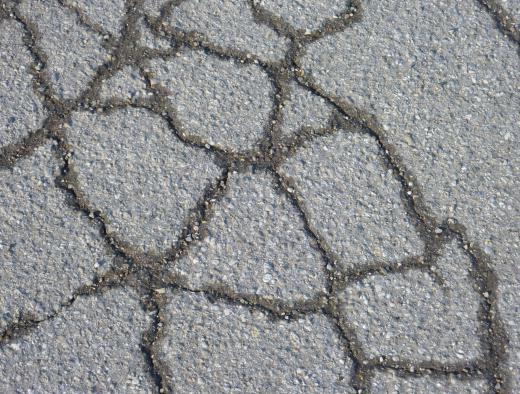A repair sealant is a watertight adhesive used to patch cracks in exterior surfaces. Repair sealants are often made of quick-drying plastic compounds designed to be strong and durable. There are a wide range of project-specific repair sealant varieties available to fix damage to items that come in direct contact with moisture like boats, driveways, and pools. Some repair sealants come in kits that include a piece of patching material and application tools. Application instructions and drying times are different for each repair sealant product.
Marine repair sealant is commonly used all over the structure of boats to fix cracks and keep them watertight. Small cracks on a boat can turn into major damage when they are exposed to the pressure of being pounded through crashing waves. Clear silicone rubber is often used to make marine sealant strong enough to stand up to the water pressure without springing a leak. Most manufacturers suggest using a hull cleaning product to strip any residue from the boat before applying the repair sealant. Silicone repair sealants labeled for marine use are often used as general waterproofing repair agents to seal and protect around the house.

Driveway repair sealant is specifically designed to adhere to the rocky surface and improve the look and functionality of a blacktop surface. Temperature fluctuation and settling earth can often cause what was once a solid, even driveway to split and break. Repair sealant made for use on driveways is usually tinted black and often comes in caulking tubes. The sealant is commonly injected directly into the cracks in asphalt driveways to prevent water damage and deter spreading.

Vinyl repair sealant is one of the most widely used kinds. Patching sealants for above-ground pools can often be applied to small underwater cracks in the vinyl without draining the pool. Larger splits in pool material may require the use of a vinyl patch in conjunction with the sealant. In a matter of minutes, most vinyl sealants will fully cure and form a waterproof seal. Many pool repair sealants are repair sealants designed to permanently remain flexible to avoid future cracking.
Food-grade silicone repair sealants are used in equipment repairs involving edible products. Some sealants give off toxic fumes that would contaminate items intended for consumption. Repair sealants that are specifically labeled as food safe are designed to cure fully without leaching chemicals into the foods with which they come into contact.
